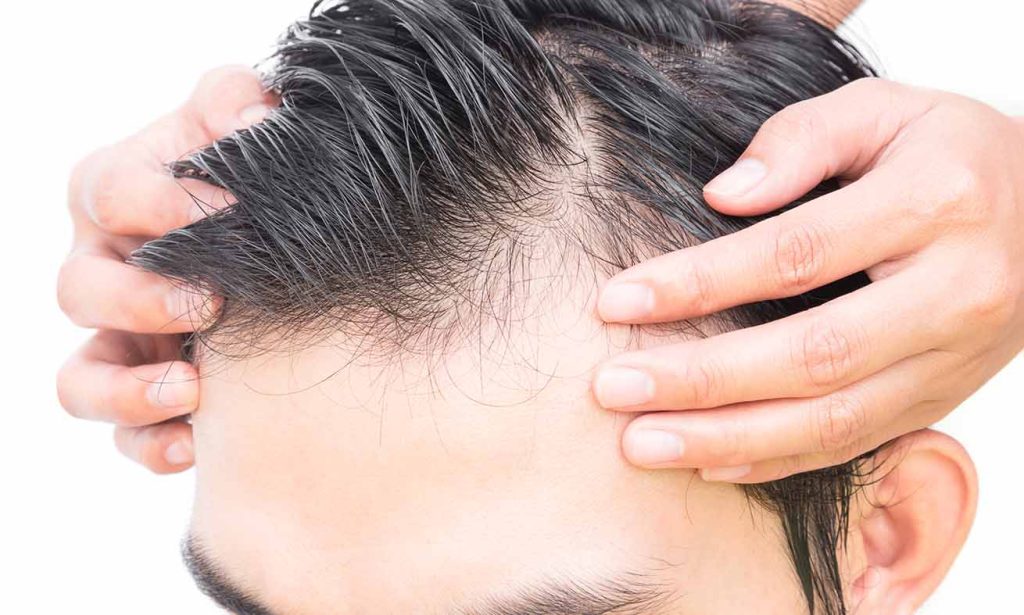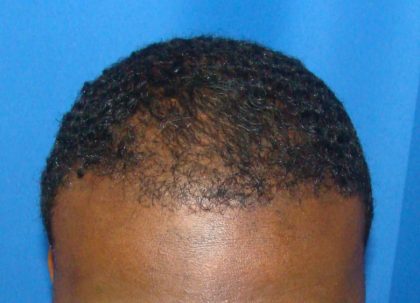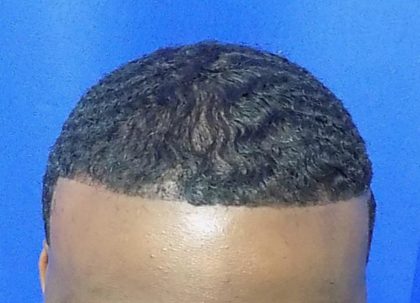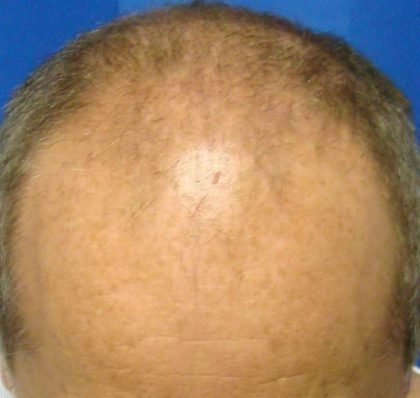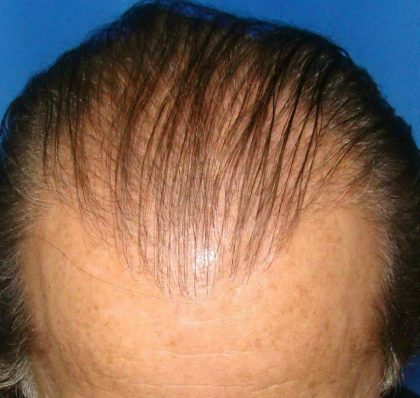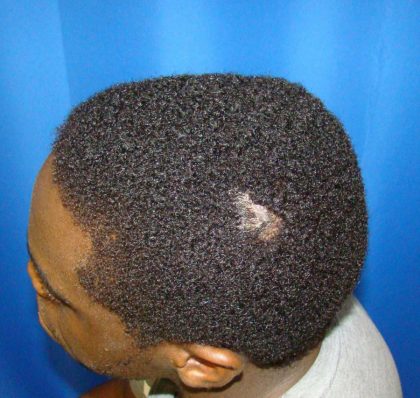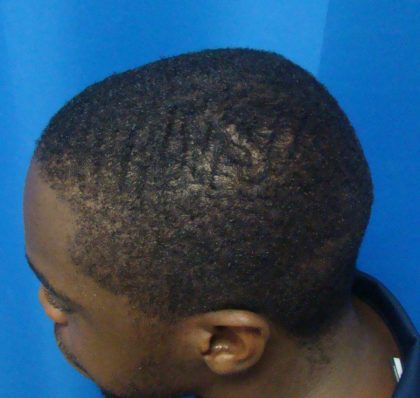Our hair is a part of our personality. It’s on our scalp, but it’s also present in various forms on our body. As well as contributing to our overall appearance, it serves important functions. Understanding its structure, how it grows, and what causes it to fall out can help us to maintain its health. It can also provide guidance if our hair is thinning and we’re seeking a suitable way to restore its natural thickness.
Dr. Goran Jezic is Houston’s premier hair restoration specialist. Offering a wealth of experience in follicular unit extraction (FUE), Neograft, and other non-surgical hair restoration treatments, Houston Hair Transplant Center helps patients to restore their hair and regain their confidence. To set up a personal consultation to discuss treatment, please call (713) 864-2300 or fill out a form on our website.
Before and After Photos
About Hair
Every strand of the hair on the body grows from a follicle in the skin. And, apart from a few places, like the palms of our hands and the soles of our feet, it’s everywhere. It’s composed of a robust protein called keratin – the same protein found in skin and nails. Hair is split into three subcategories:
- Lanugo – Present at birth, only temporarily.
- Vellus Hair – Softer, shorter “peach fuzz” found all over the body.
- Terminal Hair – Thicker, longer hair, found on the scalp, under the arms, and in the pubic region.
The Hair Cycle
Healthy hair grows and sheds in a predictable cycle with four distinct phases.
- Anagen (Growth Phase)
- Catagen (Transition Phase)
- Telogen (Resting Phase)
- Exogen (Shedding Phase)
The anagen phase can take between 2-6 years. Hair specialists can diagnose conditions such as alopecia, which causes hair loss, by noting the length of each stage in the hair cycle.
The Hair Follicle
The hair follicle itself is the narrow space that contains the hair. It opens from the skin’s surface (the epidermis) down to the deeper layer of the skin (the dermis). Sebaceous glands secrete sebum to protect your skin and hair from losing moisture, and sweat glands help to regulate body temperature. Every hair has a bulb and a shaft. Each hair also has a tiny muscle, known as arrector pili, which causes the hair to stand on end when we’re cold or feeling a strong emotion. There are also some key hair structures that contribute to its appearance and aid its growth.
Hair Papilla
During the growth phase, the bulb is attached to the hair papilla. This tiny structure is made of connective tissue and contains a capillary loop to provide nutrients to the hair from the blood supply. Cells in this area regulate hair growth. They are essential to the development and function of the follicle. (1)
Hair Matrix
Located around the papilla is the hair matrix. It forms the base from which the hair will grow. Special cells called keratinocytes multiply in this area to build the hair shaft. This area also transfers melanin to the hair to determine its color.
Hair Bulb
The hair bulb contains special cells. During the growth phase, these cells are responsible for the hair increasing in length.
Growth Factors
Growth factors in the hair follicle serve multiple functions. They can help cells develop into epidermal tissue, hair follicles, and sebaceous gland cells. They also regulate new hair formation. (2)
Melanocytes
Melanocytes are the cells responsible for hair color. Hair turns white or gray with age due to a decrease in melanocyte production in the hair follicle.
Hair Growth and Shedding
The average human has between 2 and 5 million hair follicles. Around 100,000 of these are terminal hair on the scalp. The hair follicle has been described in scientific literature as a “complex miniorgan”. (3) It’s a small but intricate system of hair production. Hair grows longer during the anagen phase, then remains the same length in the catagen phase. Toward the end of the catagen phase, the hair bulb undergoes change. At this time, the follicle shrinks and the hair detaches from the papilla. Finally, because blood supply is no longer reaching the hair, in the latter part of the telogen phase it falls out completely. Before the hair falls out, hormones tell the hair follicle to produce new hair, restarting the anagen phase.
Tips for Healthier Hair
- Eat a balanced diet of nutrient rich food.
- Avoid temperature extremes in the shower (too hot or too cold).
- Exercise regularly and massage your scalp to promote circulation.
- Avoid combing or brushing your hair when it’s wet.
- Take vitamin supplements like biotin, vitamin B-12, and omega 3 fatty acids.
- Get adequate sleep and reduce stress levels as much as possible.
Hair Loss
Hair loss has many causes. However, some are more common than others. The tendency to develop male pattern hair loss, or androgenetic alopecia, is hereditary. Statistics show that 50% of men develop androgenic alopecia by age 50 with up to 80% affected by 70 years old. (4)
But it isn’t only those with hair loss in their family that lose their hair. Stress, hormonal changes, injury, disease and some medications can cause hair loss in men and women. In fact, some women are prone to androgenetic hair loss, though it has slightly different characteristics compared to male pattern hair loss.
Androgenic Alopecia
Androgens are male sex hormones that dictate certain processes in the body. One of these hormones is dihydrotestosterone (DHT). While it’s essential during puberty, it is known to cause problems later in life such as an enlarged prostate. It is also thought to be the key androgen behind male pattern hair loss. Features of the condition include thinning hair on the top and frontal regions of the scalp. (6) This hair continues to recede progressively over time, which can result in many men feeling self-conscious or depressed.
Medical Conditions and Medications
Medical conditions can cause hair loss in some people. These include:
- Asthma
- Allergic Rhinitis (Hay Fever)
- Atopic Dermatitis
- Autoimmune Diseases
- Down Syndrome
- Thyroid Disease
- Vitiligo
Some medications can cause hair loss in certain individuals. These include some of the medications used in chemotherapy for cancer treatment, blood thinners, and selective serotonin reuptake inhibitors (SSRIs)
What is Telogen Effluvium?
Telogen effluvium is a condition that causes temporary hair loss. It causes the anagen phase to stop abruptly and transition into the telogen phase earlier. Men and women can experience this condition as a result of stress or a traumatic event. Telogen effluvium has been reported in almost 37% of people recovering from Covid-19 virus. (6) Patients notice clumps of hair shedding between two and three months after the triggering event.
About Hair Restoration
A hair restoration protocol can help patients regrow their hair. Finasteride and Minoxidil are common prescription medications for hair loss. However, there are other options.
Neograft
Dr. Jezic uses Neograft technology to harvest natural grafts from a donor area of the patient’s scalp. It is a technological device that removes hair precisely, with minimal risk of error. Once the hair is harvested, it is transferred into a special collection area that minimizes damage. Grafts are usually extracted from the sides or the back of the head.
ATERA FUE
ATERA FUE makes micro punches to extract donor hair. This state-of-the-art technology is on the leading edge of hair transplantation. Real-time digital mapping and intelligent algorithms provide accuracy and preserve each follicular unit. In fact, Houston Hair Transplant Center is the only hair restoration clinic in Texas that offers ATERA hair restoration! In addition to providing treatment for male pattern hair loss, FUE can also be used for facial hair transplantation.
Autologous Conditioned Plasma
Autologous conditioned plasma, or ACP, is a supplemental treatment that uses the regenerative factors from a patient’s own blood. It is particularly beneficial for patients undergoing FUE, and can increase the density of terminal hair on the scalp.
Personal Consultation
Dr. Jezic invites all prospective patients to a consultation at his office in Houston. At each consultation, he takes time to get to know his patients so he can create the best treatment plan. He will ask you to provide some information about your hair loss and will examine thinning areas of your scalp. He may also require you to fill out some forms about your general health. Once he has conducted your physical examination and reviewed your medical notes, he will discuss your treatment plan, and schedule a hair restoration procedure where required.
Cost of Hair Restoration in Houston, TX
The cost of your hair restoration is dependent on your treatment plan. For a better idea of pricing, please contact our office at (713) 864-2300 or fill out an inquiry form to book a consultation to discuss your hair loss with Dr. Jezic and his staff.
Find out more about Dr. Jezic and the pioneering hair restoration procedures he performs by reading the Houston Hair Transplant Center blog.
References
- Driskell RR, Clavel C, Rendl M, Watt FM. Hair follicle dermal papilla cells at a glance. Journal of Cell Science. 2011;124(8):1179-1182. https://www.ncbi.nlm.nih.gov/pmc/articles/PMC3115771/
- Ryu HS, Jeong J, Lee CM, et al. Activation of Hair Cell Growth Factors by Linoleic Acid in Malva verticillata Seed. Molecules. 2021;26(8):2117. https://www.ncbi.nlm.nih.gov/pmc/articles/PMC8067726/#:~:text=Growth%20factors%20such%20as%20vascular,and%20regulate%20new%20hair%20formation.
- Wall D, Meah N, Fagan N, York K, Sinclair R. Advances in hair growth. Faculty Reviews. 2022;11. https://www.ncbi.nlm.nih.gov/pmc/articles/PMC8808739/
- Ho CH, Zito PM. Androgenetic Alopecia. Nih.gov. Published May 18, 2019. https://www.ncbi.nlm.nih.gov/books/NBK430924/
- Kinter KJ, Anekar AA. Biochemistry, Dihydrotestosterone. PubMed. Published 2020. https://www.ncbi.nlm.nih.gov/books/NBK557634/
- Sharquie KE, Jabbar RI. COVID-19 infection is a major cause of acute telogen effluvium. Irish Journal of Medical Science (1971 -). Published online August 31, 2021. https://www.ncbi.nlm.nih.gov/pmc/articles/PMC8407603/
